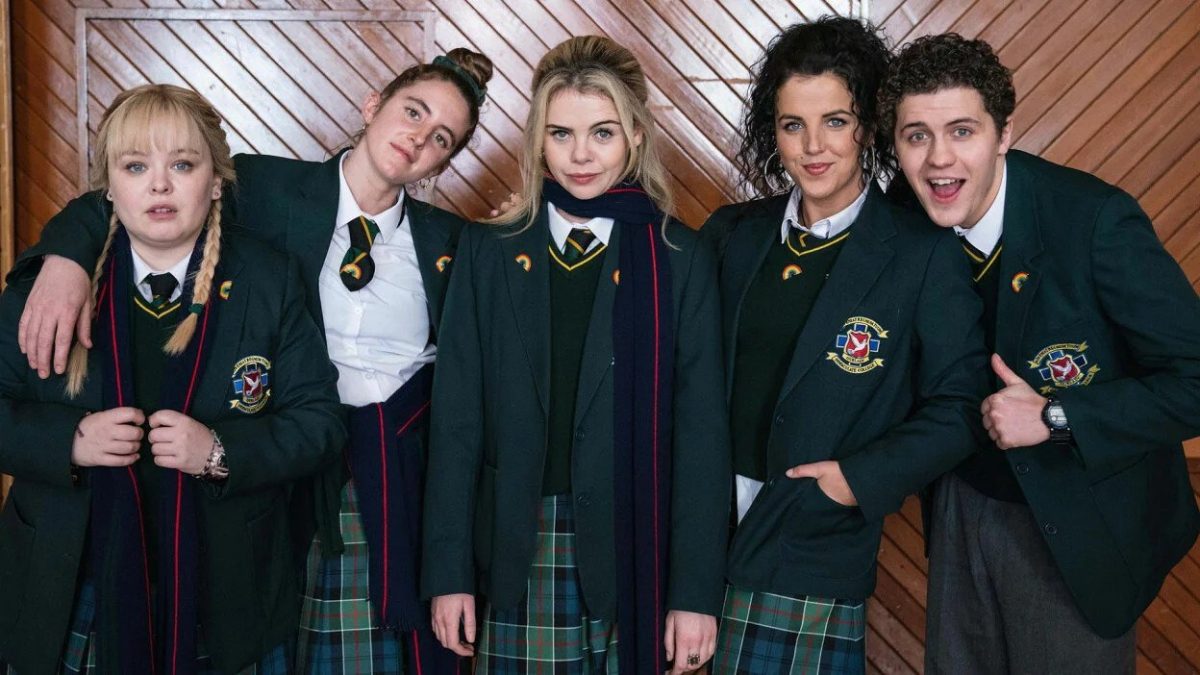Photo Courtesy of Mashable
“Derry Girls,” one of the best comedies of the decade, written and created by Lisa McGee, aired its final season on Netflix on Friday, Oct. 7. After broadcasting the third and final season of the series on Channel 4 in March to the United Kingdom, “Derry Girls” returned to U.S. viewers on Netflix one last time. The show concludes its nineteen-episode run while taking on the political trauma of the Troubles in Londonderry, Northern Ireland, from a teenage point of view.
“Derry Girls” captures the heart and soul of five teenagers growing up in the decade of the 1990s while the Troubles were cooling off, and peace was in sight.
McGee drew from personal experience when drafting the characters, especially Erin Quinn, played by Saoirse Monica-Jackson, an aspiring writer similar to McGee as a teen. Monica-Jackson is joined by Nicola Coughlan, Louisa Harland, Jamie-Lee O’Donnell and Dylan Llewellyn as her closest friends throughout the show. The lives of their parents are followed as well, giving very good insight into the characters’ decisions and situations throughout the course of the show.
The third and final season of “Derry Girls” was the only one to include a seventh episode, which ran 23 minutes longer than the standard 25-minute episodes this season. It began less politically minded than the previous two seasons but concluded with eyes toward Northern Ireland’s peaceful future with the Good Friday Agreement being voted on.
The dialogue is incredibly well written, with no letter wasted, but may be difficult for viewers not already familiar with the show or Northern Irish slang. Words like ach, cracker, dicko, eejit, ride, shite the tights and wee buns are frequently used in the best ways.
In addition to McGee’s creative genius of a script, the cast expands to include cameos by Liam Neeson and Chelsea Clinton, creating an even more funny, thought-provoking and exciting show for viewers.
The genius of the conclusion to the “Derry Girls” series altogether lies in the comedic genius, slapstick writing and performance of each line written.
Each and every character has their own unique timing and facial expressions that truly make the show the most un-“fecking”-believably funny thing you can ever watch. This season beautifully highlighted the attention to detail by the creative team and cast, pronounced in every minute of the 200-minute season.
Despite its largely political tone, the heart of “Derry Girls” is the story of family and friendship shared among the primary cast through their ups and downs of day-to-day teenage life and familial troubles.
At times, the issues characters have may seem trivial in the grand scheme of things, but that is what truly encapsulates the show as one representing the teenage lives of Erin, Orla, Clare, Michelle and James.
The teenage revolutionary essence of “Derry Girls” and review of the Troubles from a teenage perspective is captured perfectly in the fifth episode, “The Reunion,” by a quote from Erin’s ma, Mary, as a young girl.
“Our whole lives we’ve been told what we can do, what we can wear, where we can go, who we can talk to,” she tells her friends in a make-or-break moment at their high school dance. “We’re told who we are and what we believe in. It’s all curfews and barricades and roadblocks and rosaries. For once, let’s do something purely because we want to do it. This is our revolution!”








